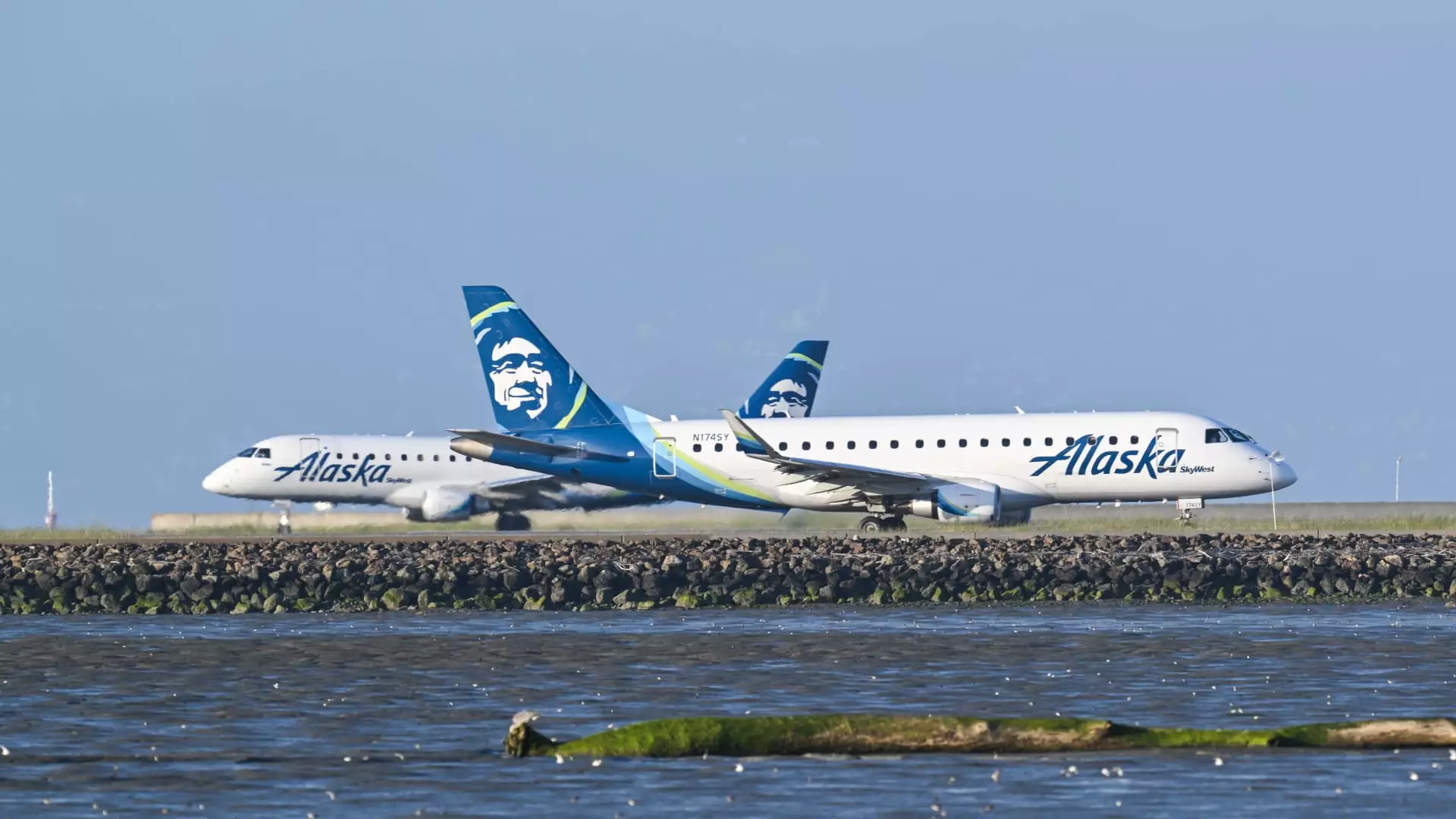Alaska Air Group has laid out a clear strategy aimed at significantly boosting its profitability by an impressive $1 billion by the year 2027. This ambitious goal is being supported by the rising demand for high-end travel, a sector that has shown resilience and growth in recent years. The company has recently completed the $1.9 billion acquisition of Hawaiian Airlines, which positions Alaska firmly in the global market by providing access to crucial Pacific routes as well as advanced wide-body aircraft, including the Boeing 787 Dreamliner and Airbus A330.
This acquisition is a notable shift for Alaska Air, which now finds itself managing two distinct brands, each with its own market strengths. By leveraging Hawaiian Airlines’ operational capabilities, Alaska aims to enhance customer offerings and expand its geographical footprint, especially in the lucrative Asian market. As travel demand rebounds post-pandemic, Alaska recognizes the strategic importance of serving international destinations, signaling a pivotal change in its operational framework.
In an exciting development, Alaska Air plans to begin nonstop flights connecting Seattle-Tacoma International Airport with Narita International Airport in Tokyo come May. Additionally, a new route to Incheon International Airport in Seoul is set to launch in October, employing Hawaiian Airlines’ Airbus A330-200 aircraft. This move not only augments Alaska’s service offerings but also positions it as a formidable competitor in the international arena.
The growth strategy is underpinned by Alaska’s ambitious plan to service a minimum of twelve international destinations by 2030, utilizing wide-body aircraft. Such a strategy is indicative of a robust recovery trajectory aimed at reshaping the carrier as a significant player in long-haul travel. The focus on international service underscores the rising trends in consumer travel preferences that favor more extensive and direct connections.
Concurrently, Alaska Air has signaled its financial confidence by authorizing a $1 billion share buyback scheme and projecting pretax margins of between 11% and 13% by 2027. The encouragement continues with per-share earnings expected to exceed $10 in the near future. Market analysts responded positively, evidenced by a nearly 40% rise in the airline’s stock value this year, surpassing the S&P 500’s performance.
The latest projections for 2024 indicate earnings between $3.50 and $4.50 a share, incorporating results from Hawaiian Airlines. This optimistic outlook reflects Alaska’s strengthened position post-acquisition and suggests a carefully navigated path toward sustained profitability. Furthermore, the company’s revised fourth-quarter earnings estimates, increasing from 20 cents to a range of 40 – 50 cents a share, demonstrates solid operational fundamentals.
Revamping Customer Experience
To enhance revenue opportunities beyond flight tickets, Alaska plans to introduce a new high-end credit card in collaboration with Bank of America. This co-branding strategy is designed to attract customers and generate more consistent revenue even when travelers are not in the air. Alaska is also reevaluating its premium seating options, particularly on Hawaiian’s Airbus A330s, as consumer demand for upgraded travel experiences continues to grow.
Alaska’s Chief Financial Officer Shane Tackett noted a marked increase in customers opting for premium economy and first-class seats, a trend, he indicated, is likely to persist. More travelers are foregoing traditional upgrade perks in favor of outright purchases of premium seating, an evolution that Alaska must address to remain competitive.
Competitive Landscape and Operational Challenges
In the competitive Seattle market, Alaska maintains a strong domestic passenger market share of 55%, significantly ahead of Delta Air Lines’ 24%. However, Delta still retains a more considerable share of the international passenger market from the same airport. Both carriers are adapting to the changing landscape of consumer preferences, specifically a heightened demand for premium travel experiences.
Moreover, operational challenges continue to pose hurdles, particularly concerning aircraft deliveries from Boeing. Recent issues with supply quality and production rates have raised concerns. Tackett emphasized the necessity for Boeing to focus on quality control rather than output speed, a sentiment underscored by Alaska’s commitment to safe and efficient operations. The anticipated release of aircraft orders and deliveries from Boeing will shed further light on this troubling situation.
Looking Ahead: A Promising Future for Alaska Air Group
As Alaska Air Group charts its future course, its strategic focus on international expansion and financial health presents a compelling narrative. By tapping into high-end travel demand while addressing operational challenges, Alaska positions itself as a dynamic player in an evolving airline industry. With innovative offerings and an expansionary growth strategy, Alaska Air Group is poised not only to enhance its market share but to redefine the traveler experience in the years to come.

